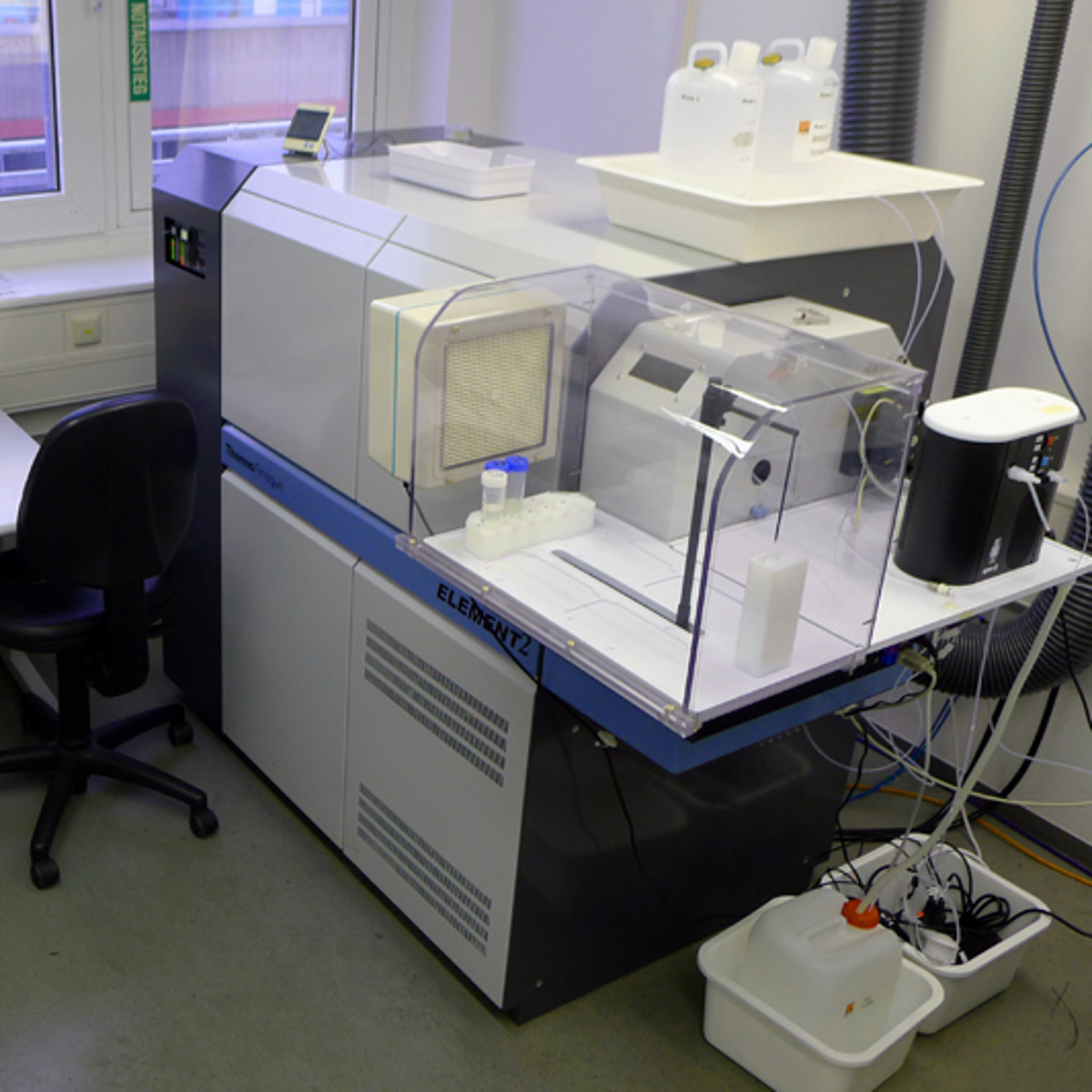...stands for inductively coupled plasma mass spectrometry.
ICP-MS-Laboratory
How it works
The sample material is injected into the inductively coupled plasma as an aerosol with argon as the carrier gas. The aerosol particles are generated either by sputtering a sample solution or by ablation of a solid using a laser. In the hot plasma (5000-7000 °C), the sample is dissociated, atomized and ionized within milliseconds. The ions enter the mass spectrometer through the so-called plasma interface. There they are filtered according to mass and energy and the intensities of the individual masses (isotopes) are determined.
Sample types
A variety of liquid and solid samples can be analyzed. For solution ICP-MS, the sample must be in liquid form, which is often achieved by dissolving it in ultra-pure acids. While carbonates can already be dissolved in dilute nitric acid, silicate rocks require a mixture of concentrated nitric acid, hydrochloric acid, and hydrofluoric acid and heating to 145 °C in a Teflon beaker. Many types of solids can be used for in-situ laser ablation ICP-MS.
The device
The ThermoFinnigan Element2 is a high-resolution, double-focussing ICP mass spectrometer for quantitative analysis of trace and ultratrace elements and isotope ratios in geological and non-geological samples with extremely high sensitivity. Detection limits of many elements are in the range of 1 ppt (= 1 part per trillion = 0.000000000001 g per ml) or better.
Laboratory equipment:
- High-resolution double-focussing ICP-MS ThermoFinnigan Element2
- NewWave UP193ss laser ablation system
- Autosampler ESI SC-E2 for 2 x 60 samples
- Mobile clean-air cabinet by PicoTrace to prevent sample contamination prior to and during analysis
- Clean lab with RLK clean-air cabinets by PicoTrace and Sartorius arium water purification unit
- Sample digestion lab with an EvapoClean digestion system and PicoTrace closed subboiling system for producing ultrapure acids (HNO3)

